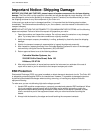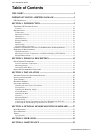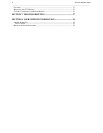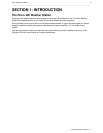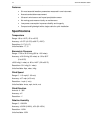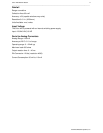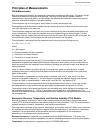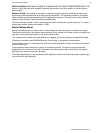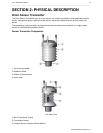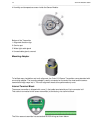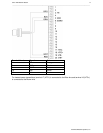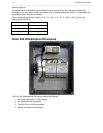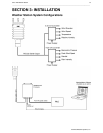12 Orion 420 Weather Station
________________________________________________________________________________________________________
Principles of Measurements
Wind Measurement
Both wind speed and direction are measured using advanced ultrasonic technology. The sensor utilizes
ultrasound to determine horizontal wind readings. The array of three equally-spaced ultrasonic
transducers on a horizontal plane is an ideal design that ensures accurate wind measurement from all
directions, without blind angles or corrupted readings.
The wind sensor has no moving parts, which makes it virtually maintenance free.
Wind speed and wind directions are determined by measuring the time it takes the ultrasound to travel
from each transducer to the other two.
The wind sensor measures the transit time (in both directions) along the three paths established by the
array of transducers. This transit time depends on the wind speed along the ultrasonic path. For zero
wind speed, both the forward and reverse transit times are the same. With wind along the sound path, the
up-wind direction transit time increases and the down-wind transit time decreases.
The wind speed is calculated from the measured transit times using the following formula:
V
w
= 0.5 x L x (1/ t
f
– 1/tr
where:
V
w
= Wind speed
L = Distance between the two transducers
t
f
= Transit time in forward direction
t
r
= Transit time in reverse direction
Measuring the six transit times allows V
w
to be computed for each of the three ultrasonic paths. The
computed wind speeds are independent of altitude, temperature and humidity, which are cancelled out
when the transit times are measured in both directions, although the individual transit times depend on
these parameters.
Using V
w
values of two array paths is enough to compute wind speed and wind direction. A signal
processing technique is used so that wind speed and wind direction are calculated from the two array
paths of best quality.
The wind speed is represented as a scalar speed in selected units (m/s, kt, mph, km/h). The wind
direction is expressed in degrees (°). The wind direction reported indicates the direction that the wind
comes from. North is represented as 0°, east as 90°, south as 180°, and west as 270°.
The wind direction is not calculated when the wind speed drops below 0.05 m/s. In this case, the last
calculated direction output remains until the wind speed increases again to the level of 0.05 m/s.
The average values of wind speed and direction are calculated as a scalar average of all samples over
the selected averaging time (1 ... 900 s). The sample count is based on a 4 Hz sampling rate. The
minimum and maximum values of wind speed and direction represent the corresponding extremes during
the averaging time.
Barometric Pressure, Temperature, and Relative Humidity (PTU) Module
Barometric pressure, temperature, and humidity measurements are combined in an advanced sensor
module (PTU) utilizing a capacitive measurement method for each parameter. The PTU module contains
separate sensors for pressure, temperature, and humidity measurement.
The measurement principle of the pressure, temperature, and humidity sensors is based on an advanced
RC oscillator and two reference capacitors against which the capacitance of the sensors is continuously
measured. The microprocessor of the transmitter performs compensation for the temperature
dependency of the pressure and humidity sensors.
Barometric pressure is measured using a capacitive silicon BAROCAP® sensor. The sensor has
minimal hysteresis and excellent repeatability, as well as outstanding temperature and long-term stability.
Temperature is measured with a capacitive ceramic THERMOCAP® sensor.




